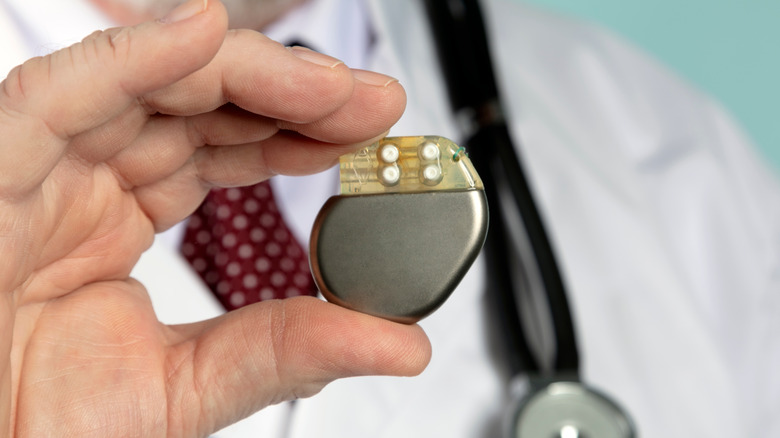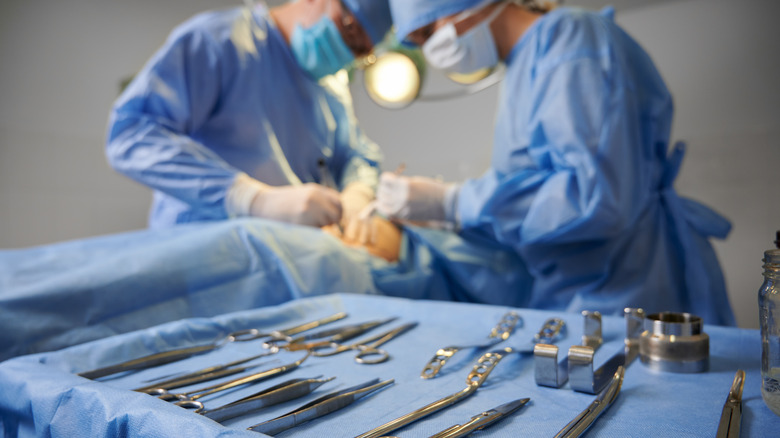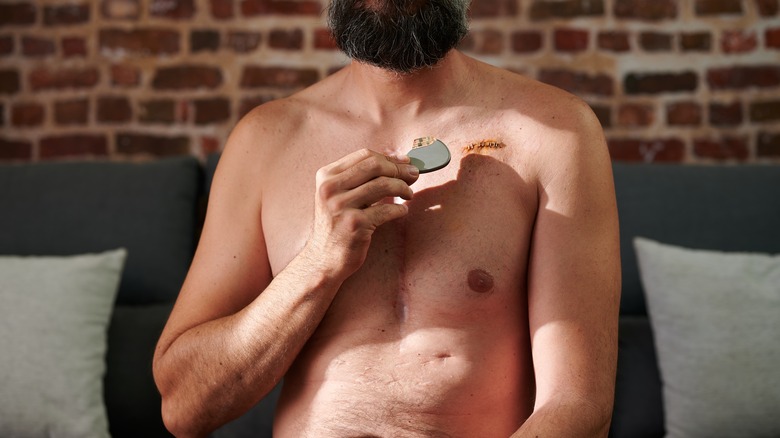The Reason Cardiac Pacemakers Were Originally Invented
Heart problems are nothing new. Humans have been fascinated by electrocardiography since the era of Hippocrates (via St. Luke's Hospital Cardiology Department). With each passing century, medicine's understanding of the cardiac system and the electricity that drives it has matured. Aristotle deemed the heart "the source of all movement," and hundreds of years later in the 17th century an English physician restarted a pigeon's heart by simply flicking it in the chest with his finger. By the 1800s, the concept of the volt was grasped, and in 1872, a drowned child was resuscitated using electrodes.
Inventions came and went that furthered the field of cardiology, but one was discovered by way of luck and accident: the cardiac pacemaker as we know it today. By the early 20th century, the world of medicine understood the rhythmic system of the heart and had began to produce the first successful electrocardiograms, and scientists got to work on fulfilling the need for cardiac pacemakers — devices meant to keep a heart beating normally that can't do it itself.
The most rudimentary pacemakers, developed in the 1920s, were external, powered by a hand-crank motor, and not portable by any means. About 20 years later, after a series of discarded prototypes, the only progress made had been to make pacemakers somewhat mobile; these bulky boxes were wheeled about on carts, only as far as their power cord and nearest electrical outlet would let them go. For the sake of pacemaker-needers everywhere, something needed to change.
An engineer and a surgeon face a chilling problem
In the mid-20th century, surgeons wanted to make open heart surgery easier to perform. They were experimentally inducing hypothermia while before starting cardiac surgery on dogs, the St. Luke's Hospital history explains. This means that the heartbeat would be significantly slowed so the surgeons could operate with less complication. There was just one catch, though: the physicians may or may not have ben able to restore the heart to its original function quickly enough, and only about half of the dogs were surviving, according to a recount by CBC.
Dr. Wilfed Bigelow was performing an experimental surgery on a dog in 1949 when its heart suddenly stopped. As an inquisitive, somewhat desperate attempt, Bigelow poked the dog's heart with an electrical probe — more specifically, he poked the sinoatrial node, the heart's "natural pacemaker" — and was stunned to see the heart lurch back to life.
On Dr. Bigelow's team was one unlikely ally, John Hopps, a Canadian electrical energy that worked for the National Research Council of Canada studying hypothermia. The camaraderie between medicine and engineering was an unusual fortune for the team at a time when the two disciplines rarely worked together, Hopps told CBC back in 1984. Dr. Bigelow's discovery that electric current restarted and put back on pace an unbeating heart set off a flurry of research and development for Hopps, who set out to invent a machine specifically meant for restoring heartbeats. Yet to come was the pacemaker.
Hopps' discovery sends a jolt through the medical community
Hopps told CBC that what he had been tasked with was an "ordinary engineering problem" and, as a result, he saw little reason to celebrate when he successfully designed a machine that restarted hearts via a catheter inserted into a vein. The Canadian research team was only using the new pacemaker-defibrillator in their hypothermia experiments, but dreamed of the potential the device would have if it could be shrunk to a fraction of the size and surgically implemented in the patient's chest, to constantly assist with cardiac function rather than just be used to restart a heart on the operating table.
The field of medicine's answer to that hypothetical was: well, why can't it be? While Hopps' own research career took him in other directions, his fateful introduction of the first pacemaker-defibrillator spurred the development of implantable cardiac pacemakers thanks to the eventual invention of lithium batteries and transistors. The decade that followed saw rapid advancement of the cardiac pacemaker as other research agencies threw their hats in (via the U.S. Department of Veterans Affairs), but this little miracle device that supports millions of people across the world (American Heart Association Journals) would not have been possible without the unlikely partnership of medicine and engineering and the happenstance invention meant to kickstart the hearts of hypothermic dogs.


